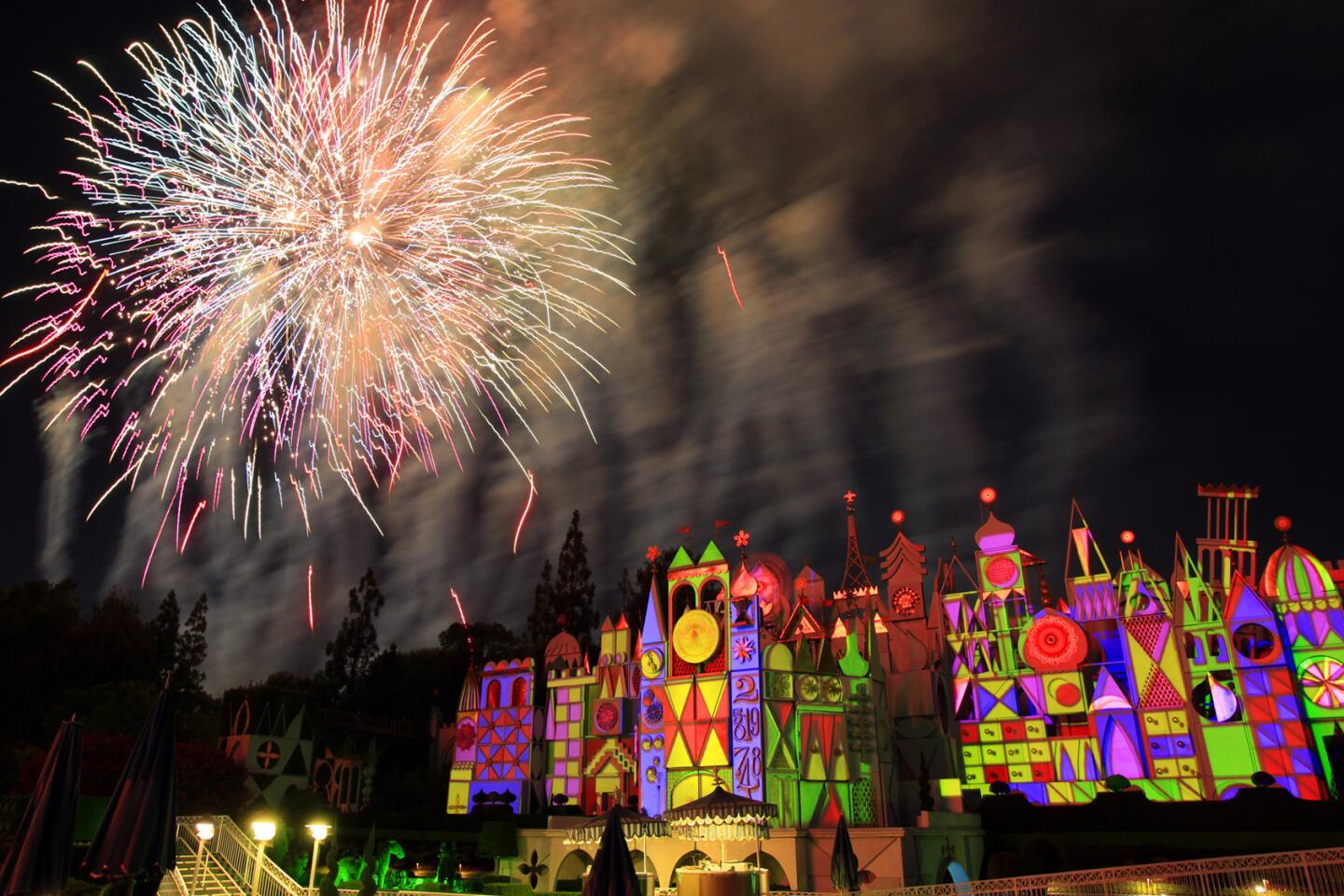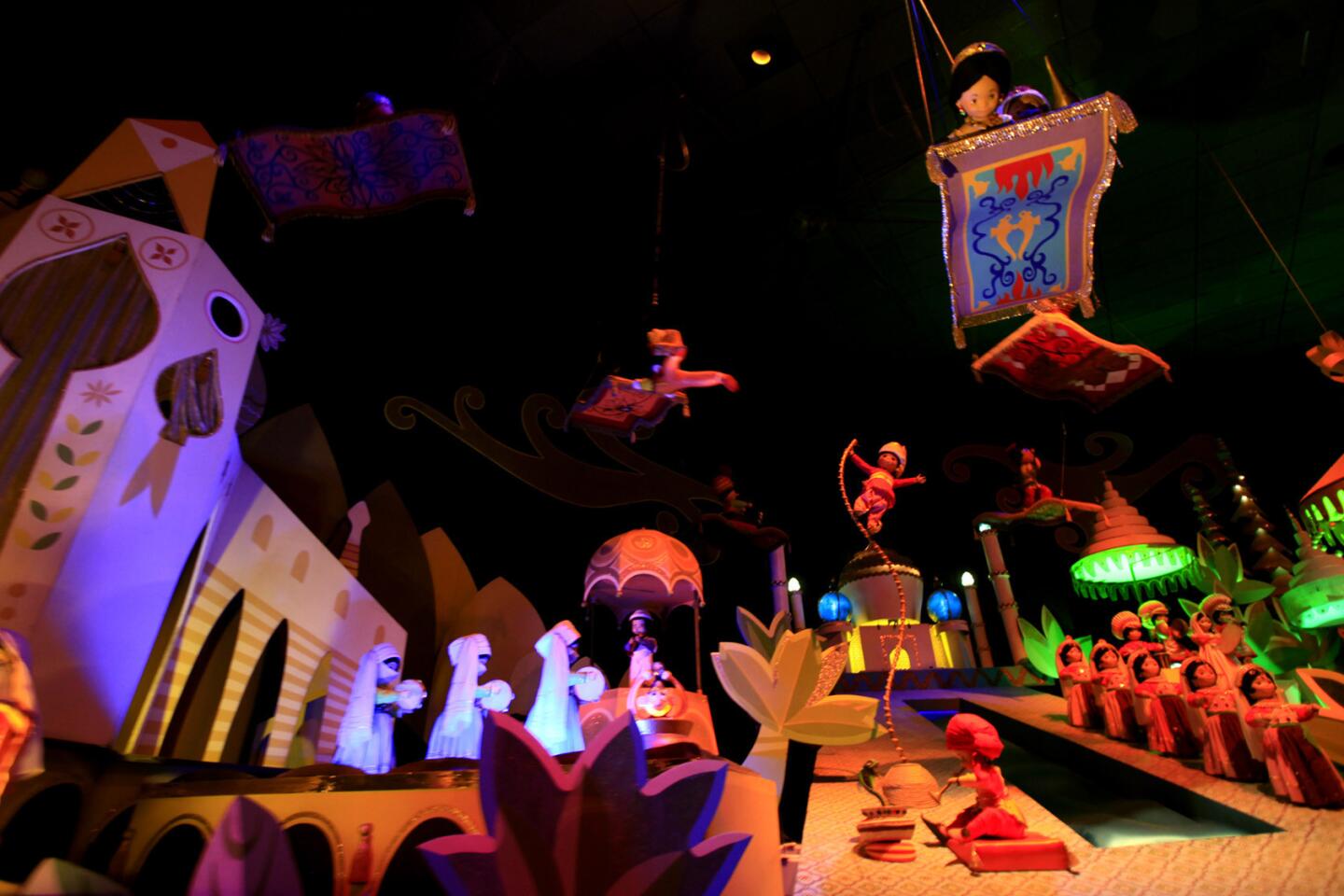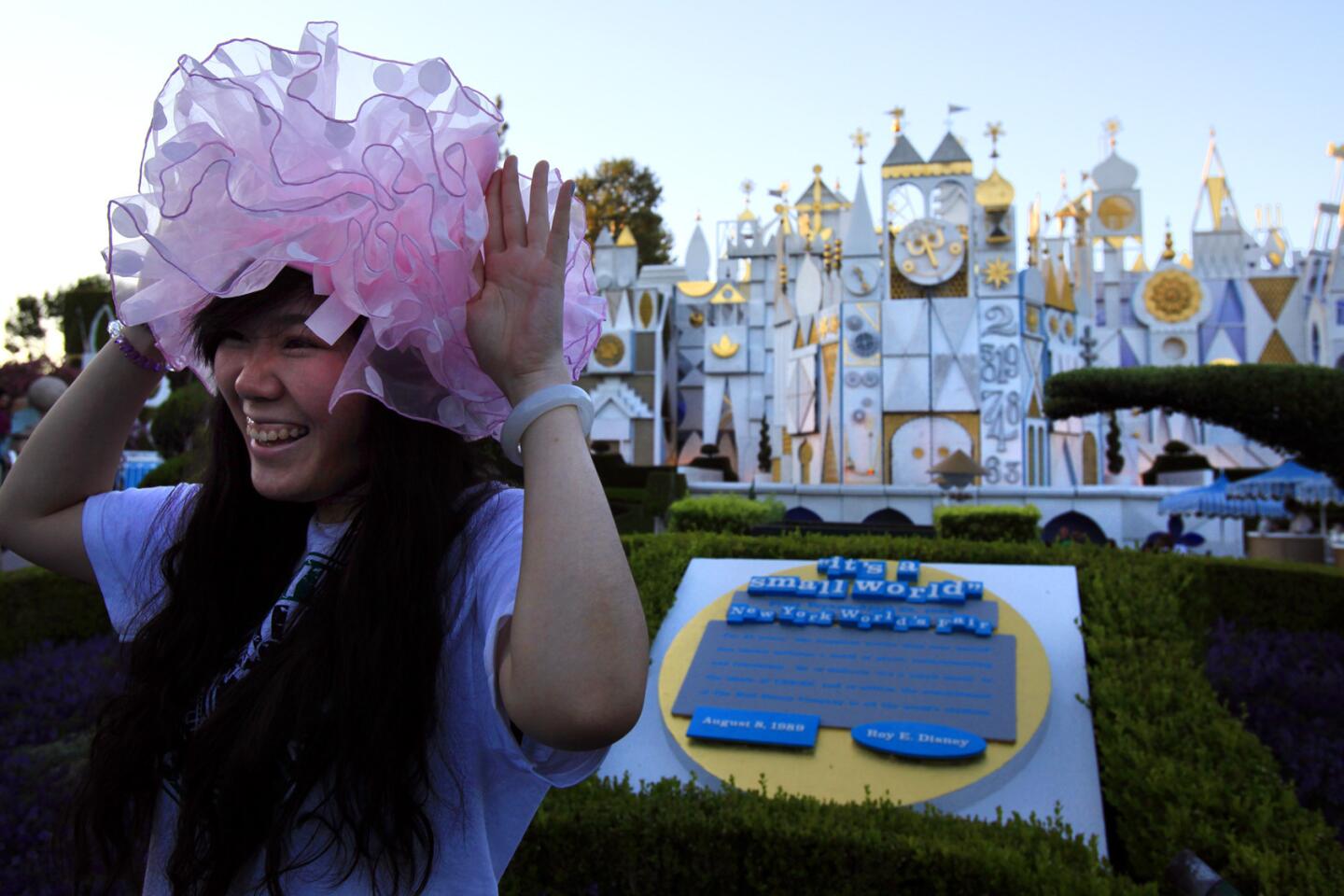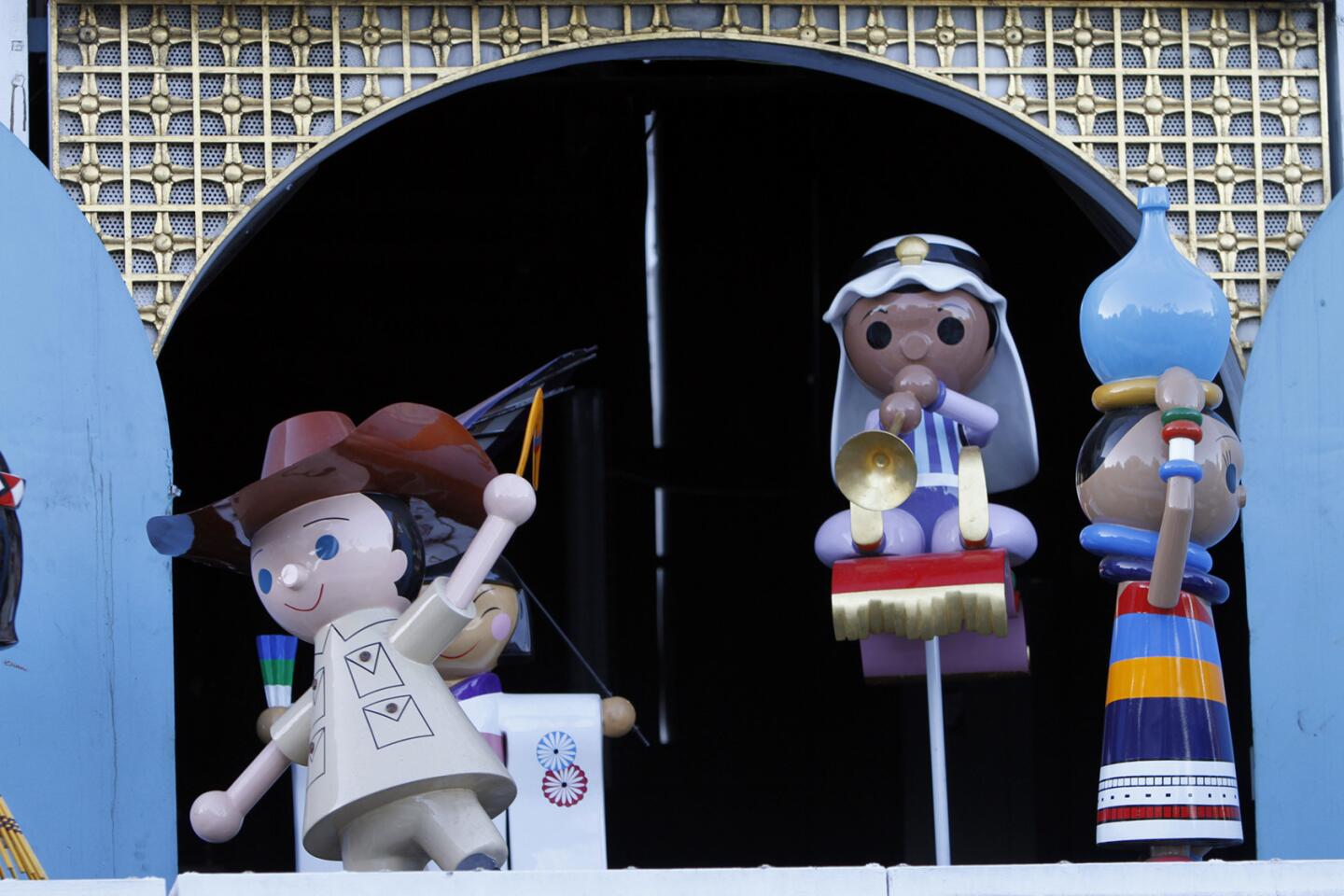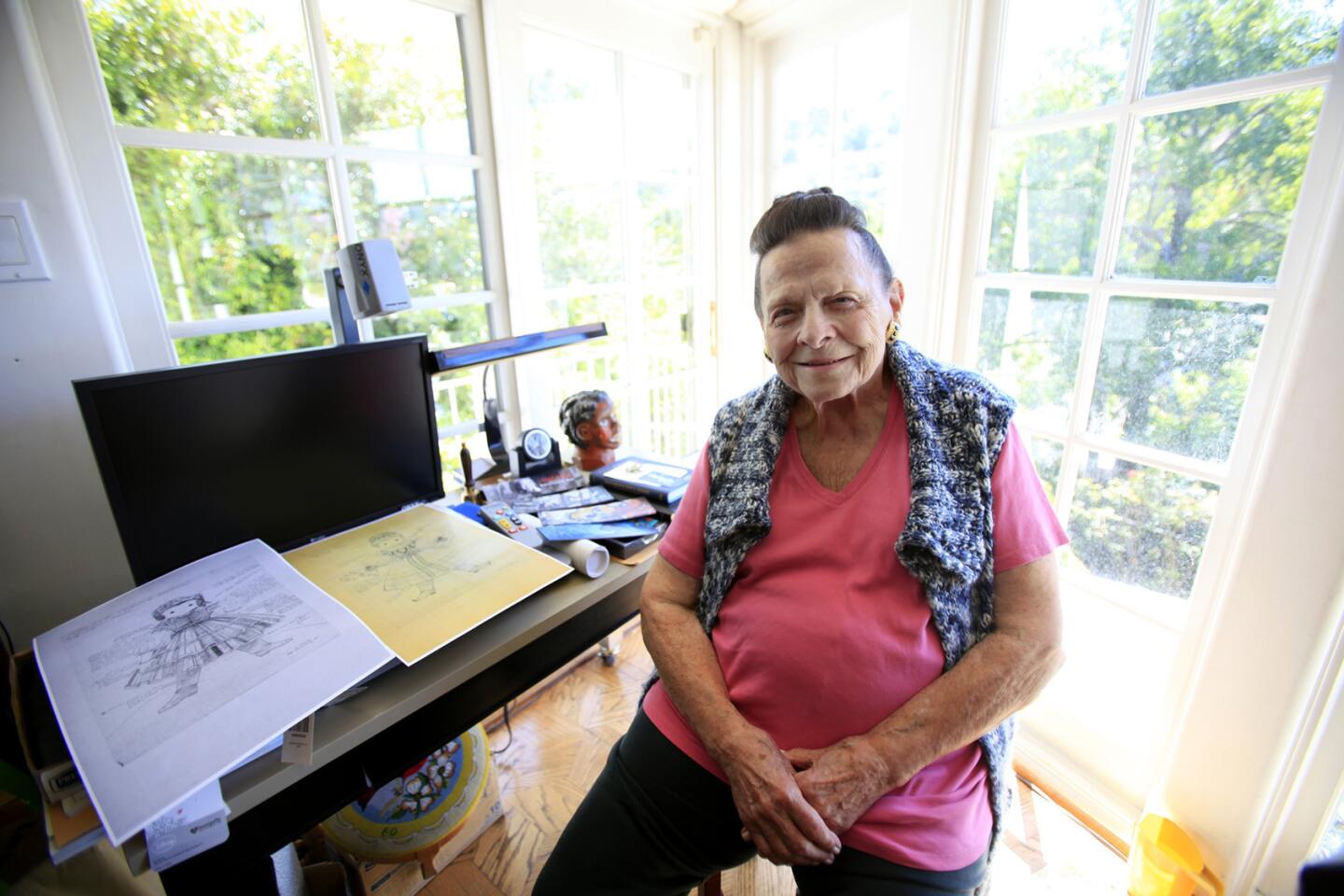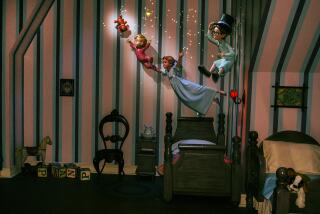‘It’s a Small World’ after all; iconic ride celebrates 50 years
When her phone rang that day in 1963, Alice Davis was working as a seamstress, stitching bras and girdles in the downtown Los Angeles garment district.
Walt Disney, the caller said, wanted to see her.
When she arrived at Disney’s office, the theme park pioneer made her an offer: Design costumes for a new ride he was planning for the 1964 New York World’s Fair. That ride would be, he promised her, an attraction that would bring joy “to every child from 1 to 100.”
“I could hardly wait to get there for the first day,” recalled Davis, now 85.
Fifty years later, “It’s a Small World” remains one of Disneyland’s most popular rides, having ferried 290 million visitors, or an average of 111,000 a week, for half a century.
Small World’s technology is outdated, and some say it perpetuates broad stereotypes, with Arab dolls flying on magic carpets and Mexicans wearing sombreros. And the famous theme song is so annoying that a recent online poll ranked it the world’s worst ear worm, beating “Gangnam Style” and “Who Let the Dogs Out?”
But at a time when aging theme park attractions are routinely scrapped — replaced by expensive high-tech rides tied to big-budget movies — Small World is marking another milestone. It’s getting its own movie.
Industry experts and theme park visitors say the low-tech attraction’s popularity hinges on its simplicity and sunny message of peace. Plus, the indoor musical boat trip is fully air conditioned, the lines usually move fast and it clocks in at 15 minutes.
As Disney once told Davis: “Always give people more than they want and they will come back.”
An attraction’s staying power depends on several factors, including maintenance costs, injury rates and, most of all, popularity.
The life span of rides are even shorter in Southern California where high real-estate costs encourage theme parks to remove aging rides to make room for new attractions. Despicable Me Minion Mayhem opened in April at Universal Studios Hollywood, for example, replacing Terminator 2: 3D, which opened in 1999.
“When a park opens a ride, they have no end-of-service date that has been laid out because they don’t know how long they will keep it,” said John Gerner, a Virginia-based theme park consultant who has worked in the industry for 30 years.
Even state-of-the-art technology doesn’t guarantee success.
“Ultimately, technology is going to fade,” theme park consultant Phil Hettema said. “What sticks with people is a story.”
That may explain why Six Flags Magic Mountain in Valencia is preparing to dismantle Colossus, heralded as the world’s tallest and fastest wooden roller coaster when it opened in 1978. Now it doesn’t crack any top-10 lists.
Small World isn’t likely to be replaced any time soon. Disney officials confirmed that a Small World movie is in the works, directed by Jon Turteltaub, best known for directing the “National Treasure” movies.
Turteltaub, who first rode the attraction in 1966 and recently introduced his own children to Small World, called it an innocent and sweet “respite from the noise of our society.”
Production has yet to begin, but Turteltaub said he expects to rely on computer-generated imagery to create a “world of laughter, a world of tears.”
The concept for Small World was born over 50 years ago when officials from the World’s Fair asked Disney to build an attraction for the UNICEF pavilion. Disney wanted a ride with a wholesome, inspiring theme, Davis said.
“He wanted something special for little girls,” she said.
Disney imagined a flume journey with more than 200 animatronic dolls, dressed in traditional garb from around the world. The theme song, written by Richard and Robert Sherman, plays an average of 1,200 times in a 16-hour day. The Sherman brothers originally wrote the song as a slow ballad, intended as a message of hope following the Cuban Missile Crisis. But Disney ordered them to speed it up.
The lead designer of the ride, artist Mary Blair, died in 1978 but now appears in Small World as a blond doll with glasses, flying from a balloon over the Eiffel Tower.
Rolly Crump, 84, a designer who worked with Blair, attributes Small World’s popularity to a simple theme and detailed artwork.
“The technology today is burning people out,” he said. “This ride is so simple, so clean and nostalgic.”
It opened in 1966 at Disneyland, where it has been among the 10 most-visited attractions. It has been replicated in Disney parks in Orlando, Tokyo, Paris and Hong Kong.
The original Anaheim version was renovated in 2009 to include modern Disney songs and movie characters, such as Ariel, Flounder and Nemo in the South Seas section; Woody and Bullseye in North America; and Tinker Bell flying over Tower Bridge in London.
The overhaul angered some purists but did little to diminish its popularity.
Disneyland art director Kim Irvine, who oversaw the revision work, said she believes Small World’s appeal is getting riders to see the world through the eyes of children.
“It’s innocent and pure and tells a story that everyone would love to believe in,” she said.
Juanita and Mark Harrigan of Danville, Calif., used to bring their daughter to Small World about 25 years ago. On a recent summer day, they introduced the ride to their 20-month-old granddaughter.
“It’s fun and relaxing,” Juanita Harrigan said.
Annual passholder Cindy Oporto of Santa Ana estimates she’s been on Small World about 50 times. Her 2-year-old son, Logan, recently took his first trip on the musical boat journey.
“He likes the singing and the animals,” she said.
Davis, the former seamstress who was married to Disney animator Marc Davis, said landing a job on the Small World ride was a dream come true for a girl who grew up without dolls during the Great Depression.
“It was marvelous,” she said. “It was the joy of my life.”
She recalls Watt Disney’s first spin through Small World in 1964. Davis prayed that he would have no complaints. But he did.
Why, Disney asked her, did she put long pantaloons on the French can-can dancers?
She replied, “You told me you wanted a family show.”
More to Read
Inside the business of entertainment
The Wide Shot brings you news, analysis and insights on everything from streaming wars to production — and what it all means for the future.
You may occasionally receive promotional content from the Los Angeles Times.
